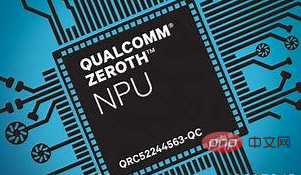Home >Common Problem >What is npu?
What is npu?
- 青灯夜游Original
- 2020-12-01 13:48:2244782browse
npu refers to "embedded neural network processor", which adopts a "data-driven parallel computing" architecture and is particularly good at processing massive multimedia data such as videos and images. The NPU processor is specially designed for IoT artificial intelligence to accelerate the operation of neural networks and solve the problem of low efficiency of traditional chips in neural network operations.

The embedded neural network processor (NPU) adopts a "data-driven parallel computing" architecture and is particularly good at processing massive multimedia data such as videos and images.
The NPU processor is specially designed for IoT artificial intelligence. It is used to accelerate the operation of neural networks and solve the problem of low efficiency of traditional chips in neural network operations. In GX8010, the CPU and MCU each have an NPU. The NPU in the MCU is relatively small and is customarily called SNPU.

The NPU processor includes modules such as multiplication and addition, activation function, two-dimensional data operation, and decompression.
The multiplication and addition module is used to calculate matrix multiplication and addition, convolution, dot multiplication and other functions. There are 64 MACs inside the NPU and 32 in the SNPU.
The activation function module uses the highest 12th order parameter fitting method to implement the activation function in the neural network. There are 6 MACs in the NPU and 3 in the SNPU.
The two-dimensional data operation module is used to implement operations on a plane, such as downsampling, plane data copy, etc. There is one MAC inside the NPU and one inside the SNPU.
The decompression module is used to decompress weight data. In order to solve the problem of small memory bandwidth in IoT devices, the weights in the neural network are compressed in the NPU compiler, which can achieve a compression effect of 6-10 times without affecting the accuracy.
The above is the detailed content of What is npu?. For more information, please follow other related articles on the PHP Chinese website!

